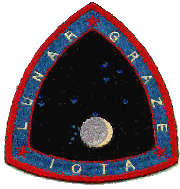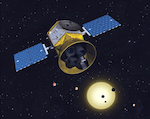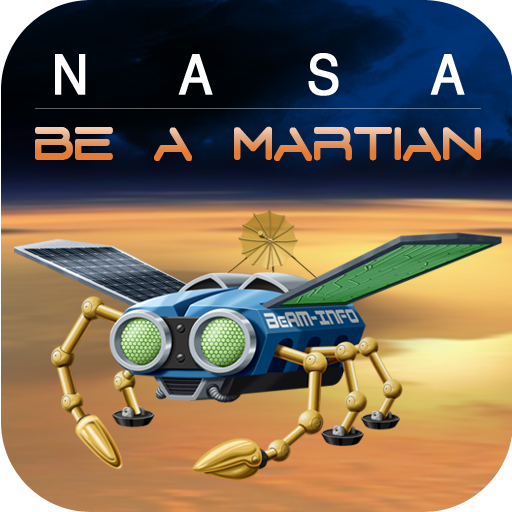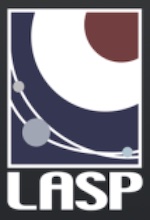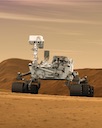|
IAAS Monthly Astronomy Newsletter (Email version) SUBSCRIBE Subscription notes below.
Donate to the IAAS! Your contributions are tax deductible. Thank you for your support!
Web and email hosting by |
website counters
An Open Invitation
For amateur radio operators and scanner enthusiasts around the world, please join the Colorado Astronomy Net on the Rocky Mountain Radio League's K1DUN repeater on 449.450 MHz or other digital and analog repeaters, Allstar nodes, Echolinks, DMR and internet links connected to the SKYHUBLINK system. The net meets on Tuesday nights at 7 P.M. Mountain Time (US) (Wednesday at 0200 GMT). Connecting to the SkyHubLink system has expanded our coverage in the U.S., Canada and internationally. All Amateur radio operators worldwide are welcome. Anyone may listen to the net. The RMRL provides a "Live Audio Feed" using Broadcastify.
Obtain your Amateur Radio (Ham) License or your General Radio Operator's License (GROL)! Visit the South Metro VE Team website for more information. The South Metro VE Team provides test sessions by appointment only. Check the website for current information. All others interested in Amateur Radio, check out the Amateur Radio Relay League website to find out more information about becoming an Amateur Radio operator.
The Colorado Astronomy Net and the IAAS are on Facebook.
Please be sure to "Like" us!
Your contributions are tax deductible.
Thank you for your support!
|
Rocket Report for 06/18/2024 - 07/02/2024 Courtesy of "The Rocketman" Ed W6RDZ Updated Weekly on Tuesdays (unedited) |
In this Newsletter...
- The Month - At-A-Glance
- Moon
- Planets & Dwarf Planets
- Astronomical Events
- Member Meteor Sightings
- Subscriber Gallery
- Planetary/Lunar Exploration Missions
- Mars Missions
- Astronomy Links and Other Space News
- Astronomical Lexicon
- UniverseToday
- Acknowledgments and References
- Subscription Information
- Newsletter Archives
- Items of Special Interest to Ham Radio Operators
- IAAS News
- Web Sites of Interest
Imaged March 21/22, 2001
using the 16" Kitt Peak Visitors Center telescope
as part of the Kitt Peak Advanced Observing Program.

"The Hubble Space Telescope captured this view of Titan (top) and Mimas (just above the rings) crossing Saturn together with their shadows as the gas giant approached its last ring-plane crossing in 2009. We are now less than a year from the next crossing." Astronomy Magazine, June 2024, p. 28. - NASA, ESA and the Hubble Heritage Team (STSCI/AURA); Acknowledgment: M.M. Wong (STSCI/UC Berkeley) and C. Go (Philippines)
The Month At-A-Glance
A calendar displaying the daily astronomical events.

The Moon
Phases
- New Moon occurs on the 6th.
- First Quarter Moon occurs on the 14th.
- Full Moon occurs on the 21st.
- Last Quarter Moon occurs on the 28th.
Apogee/Perigee
- The Moon is at Perigee (228,728 miles from Earth) on the 2nd.
- The Moon is at Apogee (251,082 miles from Earth) on the 14th.
- The Moon is at Perigee (229,464 miles from Earth) on the 27th.
Moon/Planet Pairs
- The Moon passes 2° north of Mars on the 2nd.
- Mercury passes 0.1° south of Jupiter on the 4th.
- The Moon passes 4° north of Uranus on the 4th.
- The Moon passes 5° north of Jupiter on the 5th.
- The Moon passes 0.5° south of asteroid Juno on the 13th.
- The Moon passes 1.2° north of Spica on the 16th.
- The Moon passes 0.3° north of Antares on the 20th.
- The Moon passes 1.0° north of dwarf planet Ceres on the 23rd.
- The Moon passes 0.08° north of Saturn on the 27th.
- The Moon passes 0.3° north of Neptune on the 28th.
- Mercury passes 5° south of Pollux on the 29th.
For reference: The Full Moon subtends an angle of ~0.5°.
Experts Pick the Top Stargazing Events for 2024
The Planets & Dwarf Planets
Planetary Reports generated by "TheSkyX" software. These reports provide predicted data for the planets for the first of each month for the current year. The rise and set times for the Sun and the Moon for each day of the month as well as meteor shower radiants are also included in the reports. These reports have been optimized for the Denver, Colorado location, however, the times will be approximate for other locations on Earth.
(Times are Mountain Daylight Time (MDT) unless otherwise noted. Times will vary slightly depending on your location.)
|
Planetary Highlights for June
"June's pre-dawn sky finds six planets strung along the ecliptic, spanning 72° on the 1st. In order of increasing elongation from the Sun, they are Jupiter, Mercury, Uranus, Mars, Neptune, and Saturn. A 24-day-old waning crescent Moon joins the line of objects, 16° east of Saturn. It's a great time to become acquainted with many planets all in one go, and during nice weather to boot. Some of the planets switch places early in the month, while the Moon wanders across the line over the span of four days. Most are visible to the unaided eye, though Mercury is challenging as its elongation quickly diminishes in bright twilight after the 1st. Uranus and Neptune both require binoculars to spot." Astronomy Magazine, June 2024, p. 28. |
|
 |
Mercury
|
 |
Venus
Is in superior conjunction on the 4th. After conjunction, Venus returns to the evening sky. Venus sets about 9:04 p.m. by month's end. Look for Venus low to the west about 30 minutes after sunset during the last half of June. Venus moves from the constellation of Taurus into Gemini shining at magnitude -3.9 on the 15th. |
 |
Earth
Summer solstice occurs at 4:51 P.M. EDT on the 20th. |
 |
Mars
Rises at 3:19 a.m. on the 1st and about 2:19 a.m. by month's end. Look for Mars to the southeast before sunrise. Mars moves from the constellation of Pisces into Aries shining at magnitude 1.0. |
 |
Jupiter
|
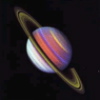 |
Saturn
|
 |
Uranus
Rises at 4:38 a.m. on the 1st and about 2:45 a.m. by month's end. Look to the southeast to spot Uranus preceding Jupiter by about a half hour. Uranus is in the constellation of Taurus shining at magnitude 5.8. |
 |
Neptune
Rises at 2:21 a.m. on the 1st and about 12:24 a.m. by the end of the month. Look for Neptune before sunrise to the south. Neptune trails Saturn by about a half hour. Neptune is in the constellation of Pisces shining at magnitude 7.8. |
Dwarf Planets |
|
 |
Ceres
Rises at 11:21 p.m. on the 1st and about 9:13 p.m. by month's end. Ceres is visible in the early morning sky to the south. Ceres is in the constellation of Sagittarius shining at magnitude 7.7. |
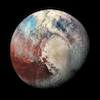 |
Pluto
Rises at 11:52 p.m. on the 1st and about 9:53 p.m. by month's end. Pluto is visible to the south before dawn. Pluto is in the constellation of Capricornus shining at magnitude 15.1. As always, good luck at spotting Neptune, Ceres and Pluto, a large telescope and dark skies will be needed. Constellation information provided by Go Astronomy. |
Astronomical Events
 |
Meteor Showers
For more information about Meteor Showers, visit Gary Kronk's Meteor Showers Online web page. Meteor Scatter (or Meteor burst communications) - "is a radio propagation mode that exploits the ionized trails of meteors during atmospheric entry to establish brief communications paths between radio stations up to 2,250 kilometres (1,400 mi) apart." Tune your shortwave or your HF amateur radio to 54.310 MHz SSB and see if you can hear any pings. Try other frequencies as well... 6m FT8 digital - 50.313 Mhz & 50.276 Mhz, JP-65 digital mode and the carrier frequencies of the lower VHF bands for TV channels 2, 3 & 4. Meteor Rx How-To by Terry Bullett (WØASP) |
||||
 |
Comets
For more information about Comets, visit Gary Kronk's Cometography.com webpage. |
||||
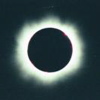
|
Eclipses
Solar Eclipses
Lunar Eclipses
|
||||
 |
Observational Opportunities
 Asteroids
|
(From west to east)
 Ocultations
|
|
Member Meteor Sightings
In this section I will post meteor, fireball, etc sightings that have been published on the American Meteor Society's web site. I want to make this an active section of the web pages and newsletter and would like to publish the links to member sightings. If you have any published sightings, please provide me with the links and I will post them here for all to enjoy.
Event ID
Date/Time
Location
Observer
Link
3871-2015
2015-11-13 01:55 MST
CO
Charles N
3871a
3587-2015
2015-11-22 17:38 MST
CO
Kevin S
3587aw
3829-2015
2015-12-05 18:06 MST
CO
Burness A
3829a
986-2020
2020-02-21 22:20 MST
CO
Lukas S
986
3716-2020
2020-07-24 23:22 MDT
CO
Lukas S
3716
4774-2021
2021-08-13 21:57 MDT
UT
Lukas S
4774
7044-2021
2021-10-28 20:37 MDT
CO
Burness A
249058
6763-2022
2022-10-06 05:56 CDT
OK
Mike C
6763
5300-2023
2023-09-11 22:04 MDT
CO
Lukas S
5300
578-2024
2024-01-28 23:05 MST
CO
Lukas S
578
Subscriber Gallery
Featured Images
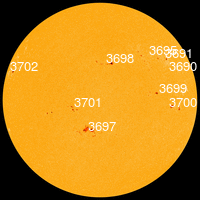 |
Taken: June 3, 2024
Sunspot AR3697 has a 'beta-gamma-delta' magnetic
field harbors energy for X-class solar flares.
Credit: SDO/HMI
Planetary/Lunar Exploration Missions
(Excerpts from recent JPL mission updates)
 |
 |
Mars Missions
Be A Martian

Mars website mobile version is here!
Astronomy Links and Other Space News
(If you have a link you would like to recommend to our readers, please feel free to submit it.)

Colorado Astronomy Links
- Brighton Astronomy Group - Astronomy in Brighton, Colorado (under construction).
- Cloudbait Observatory, Guffey Colorado - Submit your fireball reports here. Interesting, knowledgeable site.
- Colorado Springs Astronomical Society - The Colorado Springs Astronomical Society (CSAS) is a nonprofit organization dedicated to the enjoyment of the nighttime sky.
- Denver Astronomical Society - The Deep Space Exploration Society is a Colorado based nonprofit organization dedicated to practical astronomy and space science education for students, the general public, and society members.
- Deep Space Exploration Society - Promotes the enjoyment and understanding of astronomical phenomena, history and lore by providing educational and observing opportunities for our members, general public, and outreach activities at the University of Denver's historic Chamberlin Observatory, schools, and nature centers.
- Little Thompson Observatory - Begin or sustain your interest in astronomy at LTO! The night sky is wondrous, filled with countless swirling galaxies, the planets, the moon and so much more. Many of these sights are easily visible from Earth, but few people have witnessed them personally.
The Little Thompson Observatory can change that for you. Our mission is to help people of all ages learn about the universe by offering a first-hand experience with astronomy...
- National Space Science & Technology Institute - NSSTI runs the Star Light—Star Bright Observatory in Colorado Springs, Colorado.
- Northern Colorado Astronomical Society - The Northern Colorado Astronomical Society is a non-profit organization dedicated to promoting the science of astronomy and to encourage and coordinate activities of amateur astronomers.
- Rocky Mountain Star Stare - The Premier Star Party in The Rocky Mountains
- SkyWatchers - Coal Creek Canyon Sky Watchers - Coal Creek Canyon Sky Watchers is an astronomy and space exploration group that features expert presenters on topics such as the exploration of the Moon, Mars and other planets, international space exploration missions, as well as other astronomy topics. We established Sky Watchers in 2014 and usually have about 35 attendees at our meetings.
- Southern Colorado Astronomical Society - The Southern Colorado Astronomical Society, CSU-P and the Pueblo Nature and Raptor Center welcomes everyone to participate in the discovery of our night sky.
- Star Cruiser Bill's Astrophotography - Great astrophotography from Aurora Colorado.
- Star Light-Star Bright Observatory - The observatory is part of the nonprofit National Space Science & Technology Institute's education and public outreach program.
The goal of the Star Light—Star Bright Observatory, is to put the universe within reach of primary grade students and their teachers; along with being an educational asset for the community. The observatory is an educational project that was established in 2004 to serve young and old alike and provides the only free access to viewing the universe in the Pikes Peak Region.
Radio Astronomy Links
- AMSAT - The Radio Amateur Satellite Corporation, or AMSAT, is a worldwide group of Amateur Radio Operators (Hams)... AMSAT's goal is to foster Amateur Radio's participation in space research and communication.
- National Radio Astronomy Observatory - NRAO - Radio Astronomy news and information.
- Radio JOVE Project - Radio JOVE students and amateur scientists observe and analyze natural radio emissions of Jupiter, the Sun, and our galaxy.
-
Society of Amateur Radio Astronomers - The Society of Amateur Radio Astronomers (SARA) is an international society of dedicated enthusiasts who teach, learn, trade technical information, and do their own observations of the radio sky.
More Astronomy Links
- "TheSky" - Astronomy Software by Software Bisque. It's where discoveries are made. Where astronomers unravel the mysteries and reveal the beauty of space. At the heart of this search lies Software Bisque and its family of precision-crafted robotic telescope mounts, astronomy software solutions and embedded systems. Tools that help quench the astronomers' thirst for scientific breakthrough and personal enrichment the world over.
- A Sea of Stars - Voyages of a Merchant Mariner & Amateur Astronomer - I'm a retired Navy veteran, currently sailing with the US Navy's Military Sealift Command as an Operations Chief. My dominant interests are science (esp. astronomy), history and photography, and I enjoy naval and military wargaming WHEN I can find the time.
- A Short Guide to Celestial Navigation - Celestial navigation is the art and science of finding one's geographic position by means of astronomical observations, particularly by measuring altitudes of celestial objects — sun, moon, planets, or stars.
- The ARRL - Amateur Radio Relay League - Information about amateur radio and how to become an amateur radio operator.
- American Meteor Society - Provides amateur observers a place to learn about and report meteor, fireball and related sightings.
- AstroBackyard - Welcome to the AstroBackyard Backyard of the Week! This is a place where we honor the hard work and dedication put into building an astrophotography rig to capture the glorious night sky. There are many ways to tackle this hobby, with varying types of telescopes, cameras, and mounts with one thing in common — they produce results!
- Astrogirl Homepage - Astrogirl.org exists to educate, encourage and promote the hobby of amateur astronomy to people of all ages. It is the goal of this site to provide relevant information and resources to the amateur astronomer as an aid in their enjoyment of the night sky. It is a family-friendly, educational site and has been rated as a safe site for all ages.
- Astronomia - Online web applications that use catalogues of astronomical objects. Applications and their description are also prepared in English.
- Astronomy Picture of the Day - Discover the cosmos! Each day a different image or photograph of our fascinating universe is featured, along with a brief explanation written by a professional astronomer.
- Astronomy Resources - This site has some good links a young, interested student wishes to share.
- Beginners Guide To Astrophotography - A Quick & Easy Tutorial Of How To Take DSLR Astro Photography
- Be an Astronomer right from your Window - At-home astronomy techniques.
- Black Hole Encyclopedia - Excellent site from StarDate - University of Texas McDonald Observatory
- Caelum Observatory - The LARGEST dedicated public telescope in the Southwest at the Mount Lemmon SkyCenter!
- Celestron Telescopes - Celestron telescopes.
- Citizen Science - Citizen Science Projects - NASA's citizen science projects are collaborations between scientists and interested members of the public.
- Clear Skies Observing Guides - CSOG, short for Clear Skies Observing Guides is a new concept in visual amateur astronomy. It is a digital publication that will enable observers to target all deepsky objects and carbon stars within reach of their equipment.
- The Constellations of the Night Sky - Good site for finding out more about the 88 constellations and their associated stars. Links to the constellations mentioned in the newsletter can be found on this page.
- CosmoQuest - The place where you map other worlds, explore out universe and contribute to science.
- Distant Suns - Desktop Astronomy package for PCs.
- Dwarf II Smart Telescope - Introducing DWARF II - the world's most portable smart telescope controlled by the mobile app DWARFLAB.
- EarthSky - Astronomy news.
- Go Astronomy - Links to constellations, noted in this newsletter, as well as to promote and educate people about amateur astronomy.
- Heavens-Above - As the name implies - What's up in the heavens, particularly satellite passes.
- The International Dark-Sky Association - To preserve and protect the nighttime environment and our heritage of dark skies.
- informED: 10 Teaching Tools for Educators - informED - Teacher Resources.
- Isa's Astrophotography Atelier - Isabel Streit's exceptional astrophotography web page.
- iTelescope.net - iTelescope.Net is the world's premier network of Internet connected telescopes, allowing members to take astronomical images of the night sky for the purposes of education, scientific research and astrophotography.
- JPL Solar System Ambassador Program - "Volunteers Bringing the Solar System to the Public"
- JPL Solar System - Jet Propulsion Laboratory information on our solar system.
- K8JTK.ORG - Welcome to the home page of Jeffrey Kopcak. You will find pages and posts I wrote about my hobbies, interests, projects, and things I'm involved in.
- Kids Space Center - Telescopes and Astronomy - Another site suggested by a young student - Great info about telescopes.
- Mars Exploration, Mars Rovers Information, Facts, News, Photos - National Geographic - Mars Exploration - Investigating the Red Planet.
- Meade Advanced Products Users Group - Mapug-Astronomy Topical Archive & information resource, containing a massive 335 page archive of discussions about Meade equipment, and much more: observatories, observing lists, permanent piers, equatorial wedges, remote operations, software, eyepieces, etc.
- NASA - Lunar and Planetary Science - General information, Missions to Comets, Data, Press Releases, Meteors and Meteorites, Other topics of Interest.
- NASA Science News - NASA missions, updates, astronomy news, excellent resource.
- National Archives info on space exploration - Archives Library Information Center (ALIC) - Space Exploration - Information about the United States' space flight programs, including NASA missions and the astronauts who participate in the efforts to explore space.
- Phys.org - Science News including Nanotechnology, Physics, Earth, Astronomy & Space, Technology, Chemistry, Biology and Other Sciences.
- Predictions for Solar and Lunar Eclipses - A website dedicated to predictions and information on eclipses of the Sun and Moon.
- Sky360 - What's in our skies? - Observational Citizen Science of Earth's Atmosphere and Beyond.
- Skymaps.com - Free sky maps each month.
- SKY-MAP.ORG - The main purpose of SKY-MAP is to consolidate astronomical, astrophysical and other information about different space objects and astrophysical facts.
- Space.com - Interesting space and astronomy articles.
- Spaceflight Now - Launches and satellite news.
- SpaceLinks/Space Careers - SPACELINKS is a specialist staffing consultancy sourcing and supplying high caliber professionals for a wide range of world class organizations in the Space and Defense industry.
- "SpaceRef.com" - SpaceRef's 21 news and reference web sites are designed to allow both the novice and specialist alike to explore outer space and Earth observation.
- Space Weather - Check out what the sun is doing as seen from space.
- Stellarium - Free, downloadable planetarium/astronomy software.
- Sterling Images - Images both celestial and terrestrial by Sterling "Rip" Smith (K3XO).
- Telescope Live - The New Home for Astrophotography and Remote Imaging - Online access to a global network of 10 robotic telescopes.
- The Most Expensive & Amazing Telescopes In History - Some of the most expensive and amazing telescopes in history - From The Hub Post.
- The Ultimate Beginner's Guide to Astrophotography - Looking up into the night sky with just your eyes and maybe a telescope is amazing on its own. But it can be even better when you photograph and record it for your memories.
- Top 50 Astronomy NASA Photos of All Time - A list of the most interesting moments in the history of science - From The Hub Post.
- Ultimate Resource Guide for Astronomy - The resources we have provided below cover everything from discussing what astronomy is all the way to social media groups that focus on this popular and interesting topic. Use this resource guide for finding some great sites on astronomy whether you are a teacher looking for lesson plan ideas, a student wanting to brush up on their knowledge, a college student looking for a career or you just love the stars and want the most from your experiences.
- UniverseToday - Short, interesting articles about space and related topics.
- Wildcat Astronomy - Astrophotography by James Paulson - Planetary and Deep Sky imaging at its best. Check out the Blog as well as the images for tips and tricks of astrophotography.
Astronomical Lexicon
Definitions of astronomical terms. Many of the astronomical terms used in this newsletter are defined here.
Read the Universe Today Newsletter by clicking on the logo.
Acknowledgments and References
Much of the information in this newsletter is from Astronomy® Magazine (Kalmbach Publishing), JPL mission status reports, the Internet, "Meteor Showers - A descriptive Catalog" by Gary W. Kronk, Sky & Telescope web pages, and other astronomical sources that I have stashed on my bookshelves.The author will accept any suggestions, constructive criticisms, and corrections. Please feel free to send me any new links or articles to share as well. I will try to accommodate any reasonable requests. Please feel free to send questions, comments, criticisms, or donations to the email address listed below. Enjoy!
More Acknowledgements and References
Subscription Information
Keep looking UP!
73 from KIØAR
Home of KIØAR
created by Burness F. Ansell, III,
Email me
IAAS - COO, Director of Aerospace Technologies
JPL Solar System Ambassador, Colorado
last modified: June 01, 2024
URL:http://www.ki0ar.com/astro.html
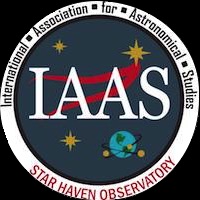


 Is in
Is in  Rises at 5:04 a.m. on the 1st and about 3:29 a.m. by month's end. Look for Jupiter to the southeast before sunrise. Jupiter is in the constellation of
Rises at 5:04 a.m. on the 1st and about 3:29 a.m. by month's end. Look for Jupiter to the southeast before sunrise. Jupiter is in the constellation of  Is
Is 

